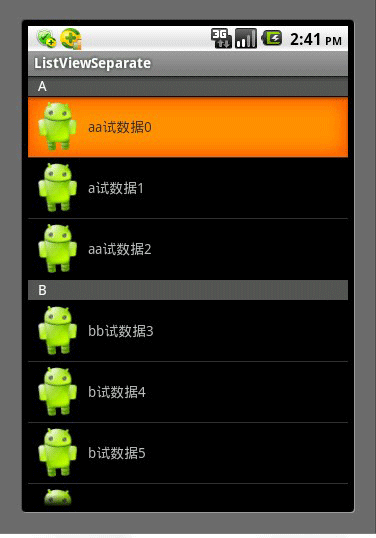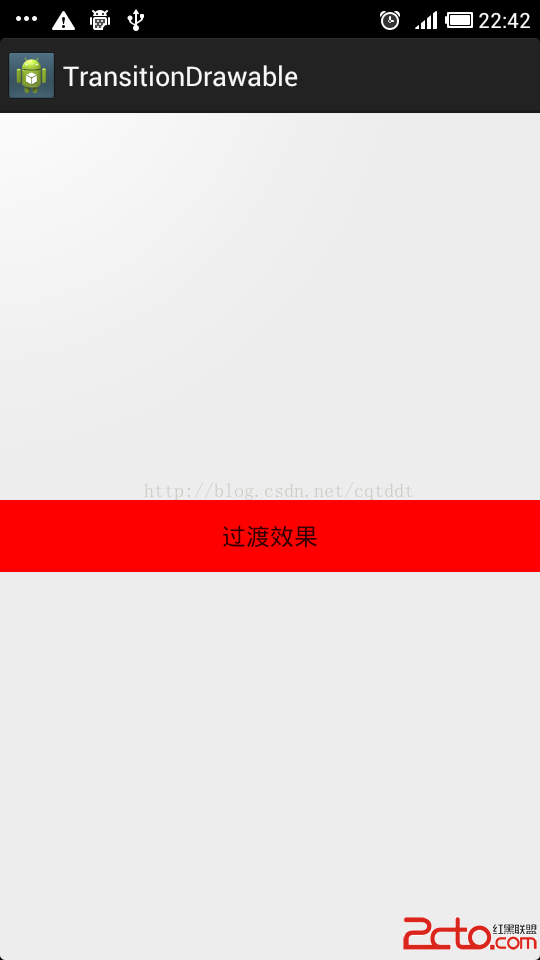編輯:關於Android編程
在上一篇文章中我們看了一個使用Handler處理Message消息的例子,本文我們來分析一下其背後隱藏的Android消息處理機制。
我們可能比較熟悉Windows操作系統的消息處理模型:
while(GetMessage(&msg,NULL, 0, 0))
{
TranslateMessage(&msg);
DispatchMessage(&msg);
}
1、消息被投遞到消息隊列中。
2、應用程序在消息處理循環中調用GetMessage函數從消息隊列中取出消息(直到取得WM_QUIT消息,才會退出消息處理循環)。
3、調用TranslateMessage函數對消息進行必要的處理,例如放棄對某些消息的響應。
4、調用DispatchMessage函數將消息分配給對應對象處理。
Android作為圖形化的操作系統,其消息處理機制與Windows是類似的,同樣有一個消息處理循環從消息隊列中取出消息,然後將消息發送給相應的對象處理。
在Android系統中,消息處理循環對應的類是Looper,消息對應的類是Message,消息隊列對應的類是MessageQueue,消息的處理和分發是通過Handler類完成的。
首先我們來分析Looper,該類定義在frameworks/base/core/java/android/os/Looper.java文件中。
Android文檔對Looper類的說明如下:
Class used to run amessage loop for a thread. Threads by default do not have a message loopassociated with them; to create one, call prepare() inthe thread that is to run the loop, and then loop() tohave it process messages until the loop is stopped.
Most interaction with amessage loop is through the Handler class.
This is a typicalexample of the implementation of a Looper thread, using the separation of prepare() and loop() tocreate an initial Handler to communicate with the Looper.
class LooperThread extends Thread {
public Handler mHandler;
public void run() {
Looper.prepare();
mHandler = new Handler() {
public void handleMessage(Message msg) {
// process incoming messages here
}
};
Looper.loop();
}
}
從上面Android文檔對Looper類的說明中可以看到,對於一個線程,要創建消息處理循環,需要調用Looper.prepare()函數和Looper.loop()函數。其中,Looper.prepare()完成必要的初始化工作,Looper.loop()完成循環取消息,分發消息的工作。
先來看Looper.prepare()函數。
71 /** Initialize the current thread as alooper.
72 * This gives you a chance to create handlers that then reference
73 * this looper, before actually starting the loop. Be sure to call
74 * {@link #loop()} after calling this method, and end it by calling
75 * {@link #quit()}.
76 */
77 public static void prepare() {
78 prepare(true);
79 }
80
81 private static void prepare(boolean quitAllowed) {
82 if (sThreadLocal.get() != null) {
83 throw new RuntimeException(Only one Looper may be created perthread);
84 }
85 sThreadLocal.set(new Looper(quitAllowed));
86 }
78行,調用prepare(true),參數true表示允許該Looper退出循環。UI線程也有Looper,而UI線程的Looper是不允許退出的。
82行和85行分別調用了sThreadLocal的get和set成員函數。首先我們來看sThreadLocal的定義:
58 static final ThreadLocal
可見,sThreadLocal是模板類ThreadLocal的實例化對象。ThreadLocal
我們來看Android文檔對ThreadLocal模板類的說明:
Implements a thread-local storage, that is, a variable forwhich each thread has its own value. All threads share the same ThreadLocal object, buteach sees a different value when accessing it, and changes made by one threaddo not affect the other threads. The implementation supports null values.
ThreadLocal對象實現了線程的私有數據存儲,其中保存的數據只有本線程自己可以訪問,其它線程無法操作。ThreadLocal.set(T)設置了其中保存的數據為T。ThreadLocal.get()取得其中保存的數據。
這樣我們就可以理解prepare函數了。82行,如果sThreadLocal.get()返回值不為null,說明該線程已經有一個Looper了,每個線程只允許有一個Looper,所以拋出一個異常退出。如果該線程還沒有Looper,則執行85行,調用sThreadLocal.set(newLooper(quitAllowed)),new一個Looper,保存在sThreadLocal中。這樣,通過調用prepare函數,就為該線程創建一個Looper對象。
還有一點需要說明的是,調用new Looper(quitAllowed)時,會創建該線程的消息隊列,來看Looper的構造函數:
220 private Looper(boolean quitAllowed) {
221 mQueue = new MessageQueue(quitAllowed);
222 mThread = Thread.currentThread();
223 }
221行,new一個MessageQueue保存在mQueue變量中,即該線程的消息隊列。
223行,取得當前線程保存在mThread變量中。
這樣,再總結一次,通過調用Looper.prepare()函數,我們就為本線程創建了Looper,同時也創建了MessageQueue。
分析完Looper.prepare()函數,我們再來看Looper.loop()函數:
112 /**
113 * Run the message queue in this thread. Besure to call
114 * {@link #quit()} to end the loop.
115 */
116 public static void loop() {
117 final Looper me = myLooper();
118 if (me == null) {
119 throw new RuntimeException(NoLooper; Looper.prepare() wasn't called on this thread.);
120 }
121 final MessageQueue queue = me.mQueue;
122
123 // Make sure the identity of thisthread is that of the local process,
124 // and keep track of what that identitytoken actually is.
125 Binder.clearCallingIdentity();
126 final long ident =Binder.clearCallingIdentity();
127 LocalLog localLog = me.mLocalLog;
128 if (localLog != null) me.mStringBuilder= new StringBuilder();
129
130 for (;;) {
131 Message msg = queue.next(); //might block
132 if (msg == null) {
133 // No message indicates thatthe message queue is quitting.
134 return;
135 }
136
137 long dispatchStart = 0;
138 // This must be in a localvariable, in case a UI event sets the logger
139 Printer logging = me.mLogging;
140 if (logging != null) {
141 logging.println(>>>>> Dispatching to +msg.target + +
142 msg.callback + : + msg.what);
143 }
144 if (localLog != null) {
145 me.mDispatching =msg.toStringLw();
146 me.mDispatchStart =SystemClock.uptimeMillis();
147 }
148
149 msg.target.dispatchMessage(msg);
150
151 if (logging != null) {
152 logging.println(<<<<< Finished to +msg.target + + msg.callback);
153 }
154 if (localLog != null) {
155 final long elapsed =SystemClock.uptimeMillis() - me.mDispatchStart;
156 final long wait =me.mDispatchStart - msg.when;
157 me.mStringBuilder.setLength(0);
158 if (elapsed >=LATENCY_THRESHOLD) {
159 me.mStringBuilder.append(WARNING! );
160 }
161 me.mStringBuilder.append(Wait: )
162 .append(wait)
163 .append(ms, Run: )
164 .append(elapsed)
165 .append(ms due Message)
166 .append(me.mDispatching);
167 localLog.log(me.mStringBuilder.toString());
168 me.mDispatching = null;
169 }
170
171 // Make sure that during the courseof dispatching the
172 // identity of the thread wasn'tcorrupted.
173 final long newIdent =Binder.clearCallingIdentity();
174 if (ident != newIdent) {
175 Log.wtf(TAG, Threadidentity changed from 0x
176 +Long.toHexString(ident) + to 0x
177 +Long.toHexString(newIdent) + while dispatching to
178 +msg.target.getClass().getName() +
179 + msg.callback + what= + msg.what);
180 }
181 msg.recycle();
182 }
183 }
117-127行,准備工作,取得本線程的Looper和MessageQueue等元素。
130-182行,這個for循環即完成循環取出消息,分發消息的工作。
131行,調用MessageQueue.next()函數,從MessageQueue中取得一個Message。MessageQueue.next()函數可能會阻塞,其返回值只有兩種可能,一是返回取得的Message,或者返回null。如果返回null,表示退出消息循環。
149行,調用msg.target.dispatchMessage(msg);完成消息的分發。
Message.target是Handler對象,所以149行,就是調用Message對應的Handler對象的dispatchMessage函數。現在問題是Message對應的Handler是怎樣指定的。
回憶一下上一篇文章《Android架構分析之Android消息處理機制(一)》,我們發送一個Message的過程是先new一個Message,然後調用Handler.sendMessage函數將Message插入本線程消息隊列的尾部。過程很簡單,所以,我們有理由相信,很可能是在Handler.sendMessage函數中,為Message.target指定了對應的Handler。
在分析Handler之前,我們要再次理解Android的消息處理流程:
1、 Handler通過Handler.sendMessage函數,將Message發送到本線程的MessageQueue中。
2、 本線程的Looper不斷循環讀取本線程的MessageQueue,從中取出下一條Message,然後調用Message.target.dispatchMessage函數,將消息發送到對應的處理函數。而其中一個可能的處理函數就是Handler.handleMessage,應用程序一般會重載實現這個函數。
下面我們來看Handler的實現,其類定義在frameworks/base/core/java/android/os/Handler.java文件中。
首先我們來看Android對Handler的說明:
A Handler allows you tosend and process Message andRunnable objects associated with a thread's MessageQueue. EachHandler instance is associated with a single thread and that thread's messagequeue. When you create a new Handler, it is bound to the thread / message queueof the thread that is creating it -- from that point on, it will delivermessages and runnables to that message queue and execute them as they come outof the message queue.
There are two main usesfor a Handler: (1) to schedule messages and runnables to be executed as somepoint in the future; and (2) to enqueue an action to be performed on adifferent thread than your own.
Scheduling messages isaccomplished with the post(Runnable), postAtTime(Runnable, long), postDelayed(Runnable, long), sendEmptyMessage(int),sendMessage(Message), sendMessageAtTime(Message, long),and sendMessageDelayed(Message, long) methods.The post versionsallow you to enqueue Runnable objects to be called by the message queue when theyare received; the sendMessage versions allow you to enqueue a Message objectcontaining a bundle of data that will be processed by the Handler's handleMessage(Message) method(requiring that you implement a subclass of Handler).
When posting or sendingto a Handler, you can either allow the item to be processed as soon as themessage queue is ready to do so, or specify a delay before it gets processed orabsolute time for it to be processed. The latter two allow you to implementtimeouts, ticks, and other timing-based behavior.
When a process iscreated for your application, its main thread is dedicated to running a messagequeue that takes care of managing the top-level application objects(activities, broadcast receivers, etc) and any windows they create. You cancreate your own threads, and communicate back with the main application threadthrough a Handler. This is done by calling the same post or sendMessage methods as before, but from your newthread. The given Runnable or Message will then be scheduled in the Handler'smessage queue and processed when appropriate.
可以看到,Handler用來將Message插入到MessageQueue中,同時在適當的時候(即從MessageQueue中取出Message時),Handler也用來對消息進行處理。
Handler提供了多個函數用於將Message插入到MessageQueue中,我們以sendMessage為例,該函數定義如下:
492 /**
493 * Pushes a message onto the end of themessage queue after all pending messages
494 * before the current time. It will bereceived in {@link #handleMessage},
495 * in the thread attached to this handler.
496 *
497 * @return Returns true if the message wassuccessfully placed in to the
498 * message queue. Returns false onfailure, usually because the
499 * looper processing the message queue is exiting.
500 */
501 public final boolean sendMessage(Messagemsg)
502 {
503 return sendMessageDelayed(msg, 0);
504 }
實際上調用的是sendMessageDelayed函數,該函數定義如下:
549 /**
550 * Enqueue a message into the message queueafter all pending messages
551 * before (current time + delayMillis). Youwill receive it in
552 * {@link #handleMessage}, in the threadattached to this handler.
553 *
554 * @return Returns true if the message wassuccessfully placed in to the
555 * message queue. Returns false onfailure, usually because the
556 * looper processing the message queue is exiting. Note that a
557 * result of true does not mean the message will be processed -- if
558 * the looper is quit before the delivery time of the message
559 * occurs then the message will be dropped.
560 */
561 public final booleansendMessageDelayed(Message msg, long delayMillis)
562 {
563 if (delayMillis < 0) {
564 delayMillis = 0;
565 }
566 return sendMessageAtTime(msg,SystemClock.uptimeMillis() + delayMillis);
567 }
實際上調用的是sendMessageAtTime函數,該函數定義如下:
569 /**
570 * Enqueue a message into the message queueafter all pending messages
571 * before the absolute time (in milliseconds)uptimeMillis.
572 * The time-base is {@linkandroid.os.SystemClock#uptimeMillis}.
573 * You will receive it in {@link#handleMessage}, in the thread attached
574 * to this handler.
575 *
576 * @param uptimeMillis The absolute time atwhich the message should be
577 * delivered, using the
578 * {@link android.os.SystemClock#uptimeMillis} time-base.
579 *
580 * @return Returns true if the message wassuccessfully placed in to the
581 * message queue. Returns false onfailure, usually because the
582 * looper processing the message queue is exiting. Note that a
583 * result of true does not mean the message will be processed -- if
584 * the looper is quit before thedelivery time of the message
585 * occurs then the message will be dropped.
586 */
587 public boolean sendMessageAtTime(Messagemsg, long uptimeMillis) {
588 MessageQueue queue = mQueue;
589 if (queue == null) {
590 RuntimeException e = newRuntimeException(
591 this + sendMessageAtTime() called with no mQueue);
592 Log.w(Looper,e.getMessage(), e);
593 return false;
594 }
595 return enqueueMessage(queue, msg,uptimeMillis);
596 }
實際上是調用enqueueMessage函數,將Message插入到MessageQueue中。該函數定義如下:
621 private boolean enqueueMessage(MessageQueuequeue, Message msg, long uptimeMillis) {
622 msg.target = this;
623 if (mAsynchronous) {
624 msg.setAsynchronous(true);
625 }
626 return queue.enqueueMessage(msg,uptimeMillis);
627 }
可以看到,622行,將Message.target設置為this,即當前Handler。這就解釋了我們前面分析Looper時提出的問題:Looper從消息隊列中取出了Message,然後調用Message.target.dispatchMessage函數,將消息發送到對應的處理函數,Message.target是什麼時候被設置的?Message.target在使用Handler.sendMessage函數將消息發送到MessageQueue時,就被設置為當前Handler。
626行,調用MessageQueue.enqueueMessage將Message插入到MessageQueue中。
以上我們知道了怎樣通過Handler.sendMessage等函數將Message插入到MessageQueue中。並且Looper在循環從MessageQueue中取出一個Message後,會調用Message.target.dispatchMessage函數,即Message對應的Handler的dispatchMessage函數。下面我們就來看一下Handler.dispatchMessage函數,其定義如下:
90 /**
91 *Handle system messages here.
92 */
93 public void dispatchMessage(Message msg) {
94 if (msg.callback != null) {
95 handleCallback(msg);
96 } else {
97 if (mCallback != null) {
98 if(mCallback.handleMessage(msg)) {
99 return;
100 }
101 }
102 handleMessage(msg);
103 }
104 }
可以看到,如果指定了Message.callback,則調用Handler.handleCallback函數,其定義如下:
732 private static void handleCallback(Messagemessage) {
733 message.callback.run();
734 }
Message.callback是Runnable類的對象,733行,調用Message.callback.run函數開始執行該Runnable對象。
如果Message.callback為null,則調用Handler.handleMessage函數,這也是我們在應用程序中創建Handler對象時,需要重載實現的handleMessage函數。
需要注意的是,如果mCallback不為null,還需要先調用mCallback.handleMessage函數,如果該函數返回非0值,就不再調用Handler.handleMessage函數了。mCallback定義如下:
738 final Callback mCallback;
可見,它是Callback接口類型:
73 /**
74 *Callback interface you can use when instantiating a Handler to avoid
75 *having to implement your own subclass of Handler.
76 *
77 *@param msg A {@link android.os.Message Message} object
78 *@return True if no further handling is desired
79 */
80 public interface Callback {
81 public boolean handleMessage(Message msg);
82 }
分析到這裡,我們就能理解Android的消息處理機制了。對於一個要處理消息的線程,它要調用Looper.prepare()創建當前線程的Looper對象,同時也創建了當前線程的MessageQueue對象,然後創建當前線程的Handler對象,重載Handler.handleMessage函數用於對消息進行處理,最後調用Looper.loop函數,循環從MessageQueue中取Message並分發處理。
在本文中,我們分析了一個普通線程如何處理Message,而對於Android的UI線程,與普通線程處理Message的基本原理是一樣的,但處理起來又有一定區別,下一篇文章中,我們將來分析UI線程是如何處理Message的。
 Android Studio -修改LogCat的顏色*美爆了*
Android Studio -修改LogCat的顏色*美爆了*
一、 先看效果二、設置 File->Settings 或Ctrl + Alt +S 找到 Editor -> Colors &Fonts ->
 Android實現的ListView分組布局改進示例
Android實現的ListView分組布局改進示例
本文實例講述了Android實現的ListView分組布局改進方法。分享給大家供大家參考,具體如下:由於是在網上轉載的一篇文章,在這裡就不多說廢話了,首先看一下最終的效果
 Android Material Design 詳解(使用support v7兼容5.0以下系統)
Android Material Design 詳解(使用support v7兼容5.0以下系統)
Material Design是Google在2014年的I/O大會上推出的全新設計語言。Material Design是基於Android 5.0(API level
 Android TransitionDrawable ImageView過度效果使用實例
Android TransitionDrawable ImageView過度效果使用實例
實現兩張圖片漸隱漸現的過渡效果Transition Drawable實現兩張圖片之間動態過度效果的方式。 運行如下所示:第一張為初始界面,第二張為過度中界面